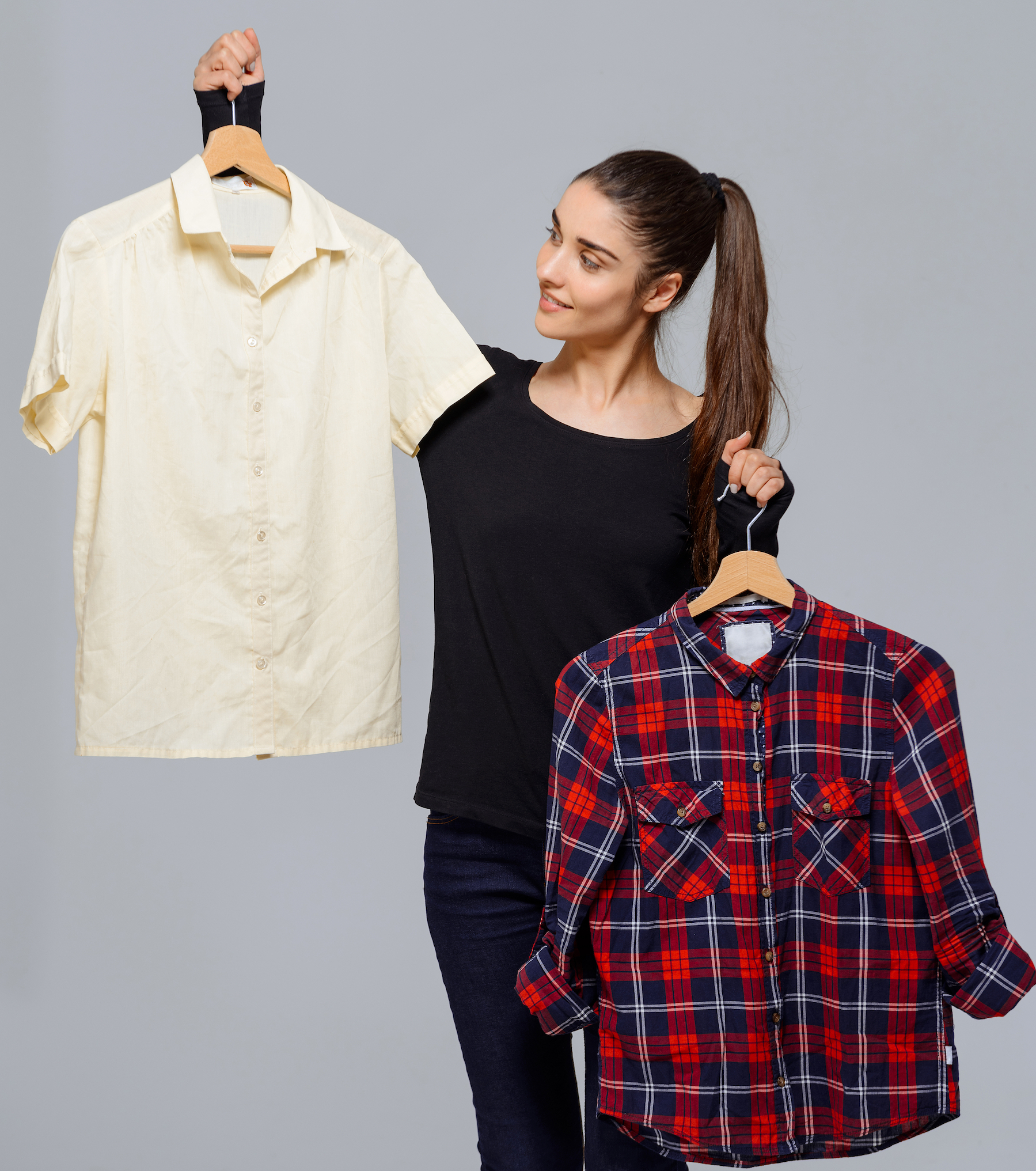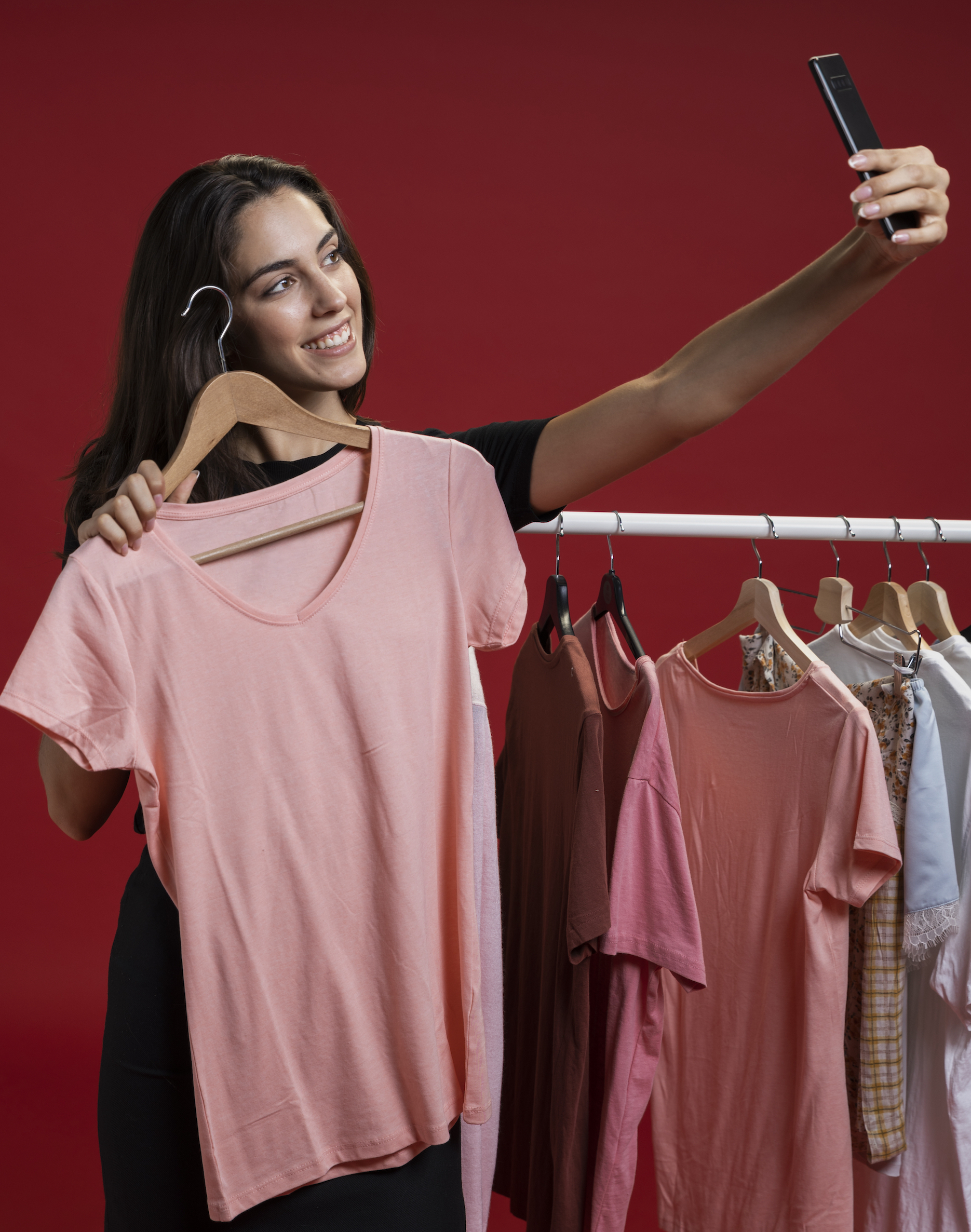Imagine a world where our closet is stylish and sustainable—where cutting-edge technology and personalised experiences redefine how we shop, wear, and care for fashion. By 2025, the global fashion industry is projected to reach a $933 billion global market, with 70 percent of consumers prioritising sustainability and personalised experiences. As brands race to adapt, understanding the top five merchandising trends will be crucial for staying ahead.

Top 5 Fashion Merchandising Trends For 2025
From eco-conscious initiatives to immersive digital experiences, fashion merchandising is redefining how brands connect with and serve their customers. As sustainability becomes a non-negotiable priority, and digital innovation offers hyper-personalisation and engagement, fashion brands and retailers must adapt swiftly to stay ahead of the curve—creating a landscape where environmental responsibility, cutting-edge technology, and consumer-centric approaches converge.
The next few years will see an evolution in merchandising strategies, driven by the demand for eco-friendly practices, immersive shopping experiences, and personalised products. Major players like Patagonia and Gucci are setting benchmarks with their commitment to circular fashion and augmented reality, signaling a broader industry shift. Meanwhile, the rise of digital-first brands and on-demand manufacturing will empower consumers with more control and customisation options than ever before. Together, these trends will shape a dynamic, responsive, and sustainable fashion ecosystem—one that prioritizes innovation, transparency, and meaningful consumer engagement. Let’s check it out!
- Sustainable and Circular Fashion
Sustainability will continue to dominate fashion merchandising, driven by increasing consumer awareness and regulatory pressures. Brands are shifting toward circular fashion, emphasising recycling, upcycling, and closed-loop production. The need to scale circular economy solutions is urgent to save people and the planet. In simple terms, a circular economy is an economic system that aims to eliminate waste through continually using and reusing resources.
This approach aims to eliminate the fashion industry’s current linear model of ‘take-make-waste’. The excessive consumption associated with the throwaway, disposal nature of fashion has led to overproduction and subsequent waste, resulting in severe environmental problems. The pressing need to take responsibility falls upon fashion brands and designers, who must focus on creating clothes that are meant to last longer and be easily repairable, developing technologies that allow old textiles to be recycled efficiently and supporting the market for second-hand clothes.
Major retailers like Patagonia and Veja exemplify this trend through their commitment to eco-friendly materials and transparent supply chains. Patagonia Worn Wear encourages customers to repair and reuse garments, reducing waste and extending product life. Additionally, luxury brands such as Stella McCartney are pioneering biodegradable textiles and regenerative farming practices to minimize environmental impact.
Market data supports this shift, with a report by McKinsey indicating that by 2025, sustainable fashion sales could constitute up to 45 percent of the apparel market, compared to 15 percent in 2020. Consumers, especially Millennials and Gen Z, are willing to pay a premium for eco-conscious products, influencing fashion brands to invest in sustainable innovations. Circular business models are also gaining traction;H&M has launched resale platforms like “H&M Pre-Loved,” which contribute to reducing fast fashion’s environmental footprint. The integration of sustainability into core merchandising strategies is becoming a key differentiator in a highly competitive landscape.
- Digital and Augmented Reality (AR) Shopping Experiences

Top 5 Fashion Merchandising Trends For 2025
Digital innovation, particularly AR and virtual try-on solutions, will become integral to fashion merchandising. Retailers such as Nike and Sephora are leveraging AR to allow consumers to virtually try products from the comfort of their home, enhancing engagement and reducing return rates. Nike’s “Nike Fit” app uses AR to scan customers’ feet, providing personalized shoe size recommendations, which enhances the e-commerce experience. Similarly, luxury brands like Gucci have incorporated AR features in their apps, enabling virtual try-ons of handbags and accessories, effortlessly combining digital and physical shopping.
Per industry forecasts, the global AR market in retail is projected to reach $19 billion by 2025, driven by consumer demand for immersive experiences. Brands that integrate AR into their merchandising strategies can offer a hyper- personalised, interactive retail experience that appeals to tech-savvy consumers. Virtual showrooms and digital fitting rooms are becoming the standard, providing a safer, contact-less retail environment. This enhances customer satisfaction and also enables fashion brands to gather valuable data on consumer preferences — informing future merchandising decisions.
- Personalisation and On-Demand Manufacturing
Personalisation will dominate fashion merchandising in 2025, with brands leveraging AI and data analytics to tailor products to individual tastes. Companies like Nike’s “Nike By You” and Adidas’ “MiZX” platform allow consumers to customize sneakers, from colours to materials. Additionally, on-demand manufacturing models are gaining popularity, reducing overproduction and inventory waste. Brands such as Ministry of Supply and Unspun utilise 3D knitting and automated production to create custom garments sustainably.
Market research indicates that personalised shopping experiences significantly increase customer loyalty and conversion rates. For instance, a report by Epsilon found that 80 percent of consumers are likely to purchase from a fashion brand that offers personalised experiences. On-demand manufacturing also aligns with sustainability goals by producing only what is ordered, minimizing excess stock. This trend encourages a shift from traditional mass production toward a more agile, consumer-centric approach.
- Tech-Integrated Wearable Fashion
By 2025, wearable technology will be effortlessly integrated into merchandising, blurring the lines between fashion and technology. From AI-enabled eyewear to click and upload photographs hands-free to smart watches, the global wearable technology market provides solutions for daily life. Brands like Levi’s and Google have collaborated on smart jackets that incorporate touch-sensitive fabrics and sensors capable of controlling smartphones or monitoring health metrics. Luxury labels such as Balenciaga have experimented with LED-embedded garments and accessories that change appearance based on user interaction, offering a novel form of self-expression.
The wearable tech market is projected to reach USD 219.30 billion in 2025 per the Business Research Company, driven by consumer interest in health, fitness, and connectivity. Fashion brands are increasingly incorporating tech features to appeal to this demand, creating products that are both functional and fashionable. Under Armour smart clothing monitors performance data through integrated wearable technology; Ralph Lauren integrates activity-tracking sensors into its PoloTech shirts; and Levi’s Jacquard jacket allows users to control mobile devices through gestures in partnership with Google.
- Rise of Digital-First and Direct-to-Consumer (DTC) Brands
The shift toward digital-first and DTC brands will accelerate in 2025, disrupting traditional retail hierarchies. Fashion brands like Everlane, Glossier, and Aritzia have built direct relationships with consumers through online platforms, bypassing brick-and-mortar stores. This approach allows for better control over branding, pricing, and inventory while providing a personalised shopping experience. E-commerce and social media marketing will continue to be vital channels for merchandising, with brands utilizing data analytics to optimize product s and inventory management.
According to eMarketer, DTC e-commerce sales are expected to account for over 20 percent of global online retail by 2025. These brands often prioritise transparency, sustainability, and community-building, resonating with younger consumers who prefer authentic brand stories. This digital-first approach enables rapid response to trends, with brands quickly updating their product lines based on real-time consumer feedback. As a result, merchandising strategies will focus more on storytelling, content marketing, and online experiences to foster brand loyalty and drive sales in an increasingly virtual marketplace.
How brands are integrating digital channels, social media, and merchandising
Fashion brands are increasingly integrating digital channels, social media, and merchandising to create immersive consumer experiences. Luxury brands like Gucci and Louis Vuitton have pioneered this approach by leveraging AR and virtual try-on tools accessible through their social media platforms, allowing customers to virtually sample products before purchasing. For instance, Gucci’s AR feature on Instagram enables users to see how sneakers look in real-time. This integration enhances engagement and personalises the shopping experience, making it more interactive and accessible across multiple digital touch-points.

Top 5 Fashion Merchandising Trends For 2025
Social media platforms are evolving into comprehensive marketplaces where brands merge content with commerce. TikTok and Instagram Shops have become central to this strategy, with brands like Nike and Balenciaga using shoppable videos and live streams to showcase new collections. Nike’s TikTok campaigns, for example, incorporate user-generated content and influencer collaborations, encouraging direct purchases through embedded links. These efforts demonstrate how brands are transforming social media from mere marketing channels into full-fledged merchandising platforms, fostering real-time interactions and immediate conversions that align with the fast-paced digital landscape.
Case studies further illustrate this trend’s success; for example, Burberry’s integration of digital and physical experiences has set a benchmark. The brand’s flagship in London features digital mirrors and interactive displays that sync with their social media campaigns, allowing customers to share their in-store looks. Similarly, in 2025, Balmain launched a digital capsule collection accessible exclusively via their social media, combining limited-edition merchandising with digital exclusives. These examples underscore how fashion brands are merging digital channels, social media, and merchandising strategies to create innovative, omnichannel ecosystems that drive engagement, loyalty, and sales in the evolving digital age.
Jasmeen Dugal is Associate Editor at FashionABC, contributing her insights on fashion, technology, and sustainability. She brings with herself more than two decades of editorial experience, working for national newspapers and luxury magazines in India.
Jasmeen Dugal has worked with exchange4media as a senior writer contributing articles on the country’s advertising and marketing movements, and then with Condenast India as Net Editor where she helmed Vogue India’s official website in terms of design, layout and daily content. Besides this, she is also an entrepreneur running her own luxury portal, Explosivefashion, which highlights the latest in luxury fashion and hospitality.








